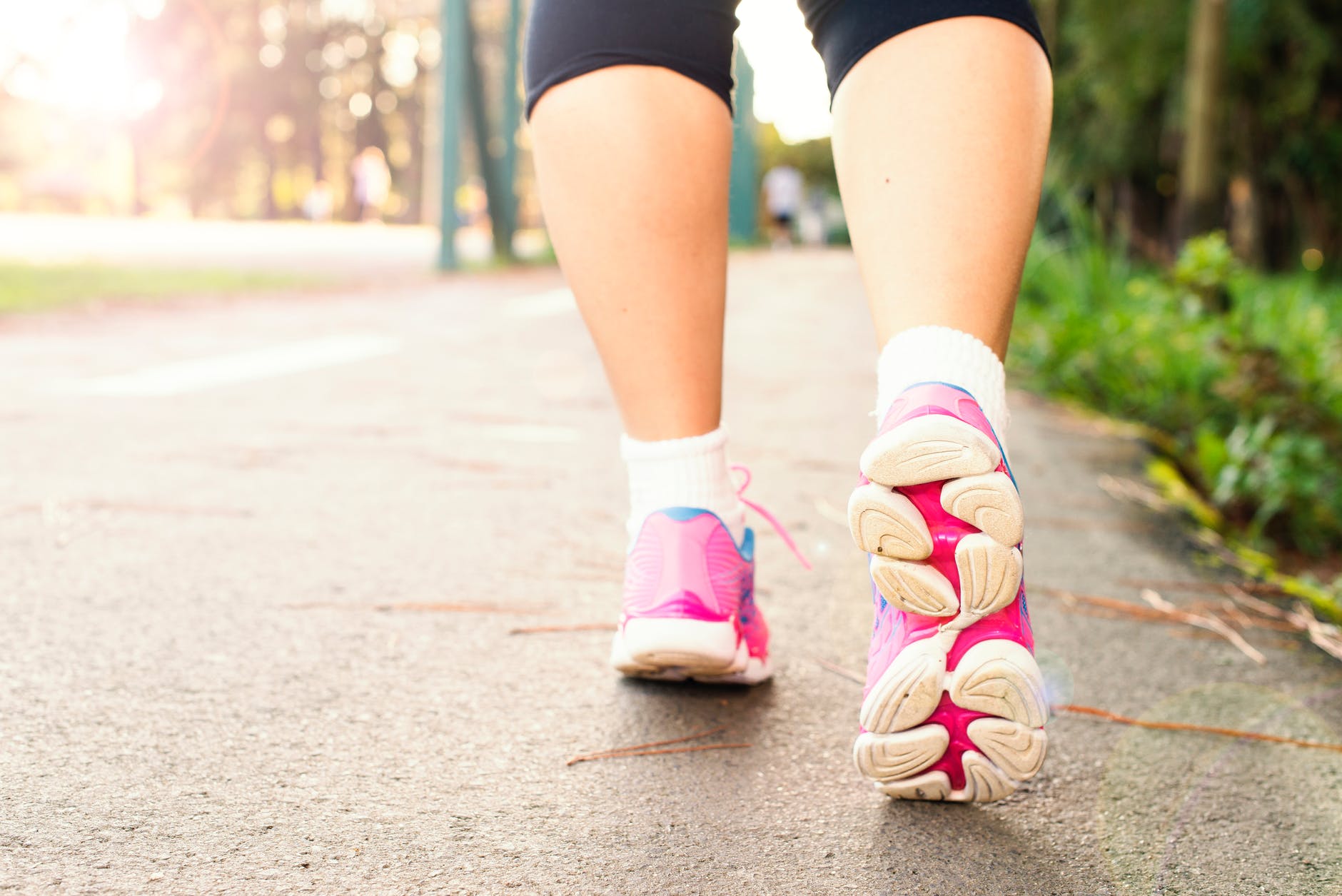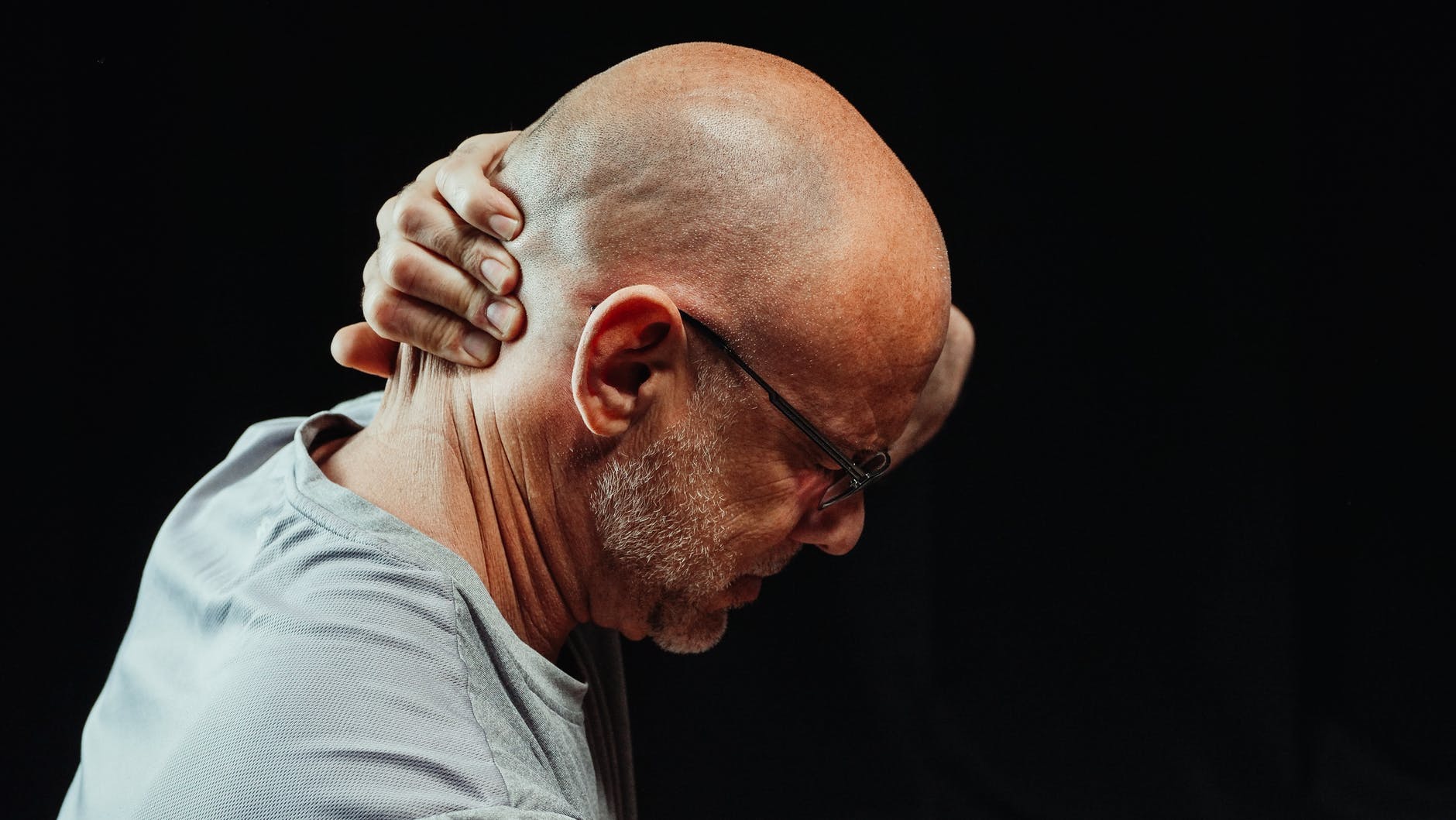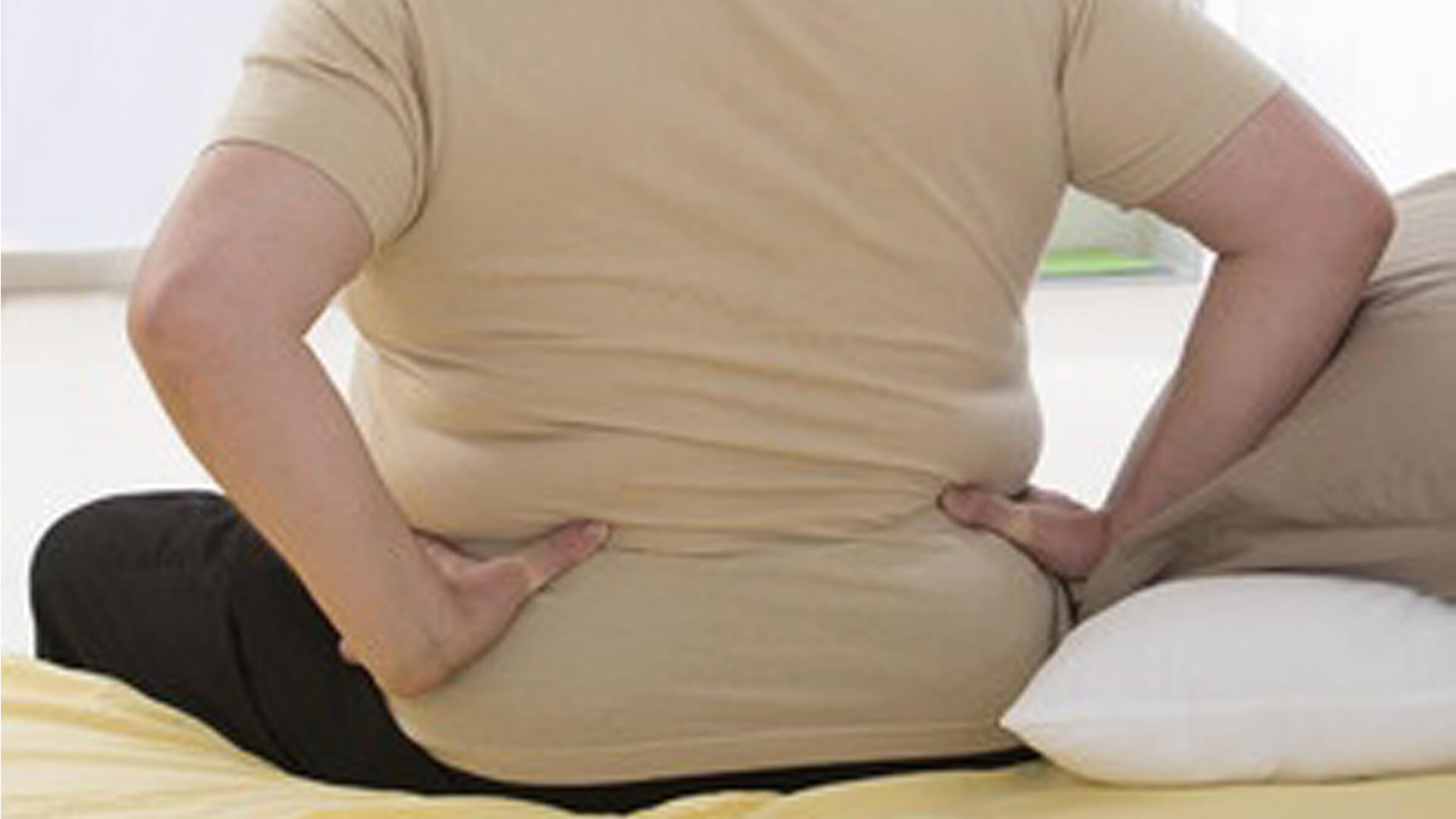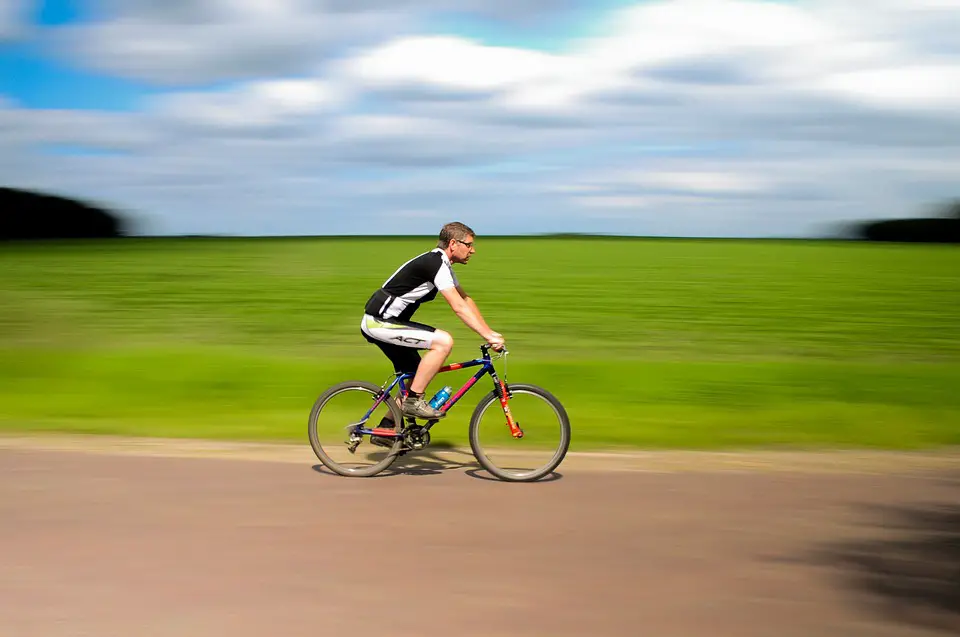Article reviewed and approved by Dr. Ibtissama Boukas, physician specializing in family medicine
You have back pain, and you're afraid it's serious. Let me guess: You read about a forum the story of Mr. Doe who received a cortisone injection following a lumbago. Or even worse, that Mrs. So-and-so had to undergo surgery following a disc herniation L5-S1.
And the worst case scenario… that back pain could come from a disease like cancer!
Are there reasons to worry when you have back pain? Can lower back pain be caused by a serious illness (like cancer)? How do we determine if our pain is simply mechanical (for example, muscle or joint pain), or if it comes from a serious impairment?
In the following article, we will differentiate between the types of low back pain, and explain the characteristics and diagnosis of a severe condition that merits an urgent consultation with your doctor.
Types of low back pain
In medicine, low back pain is sometimes differentiated into 3 categories for triage purposes. These categories are based on the patient's history, symptoms, physical examination, and assessment of psychosocial factors.
1. Simple low back pain
In medicine, low back pain is sometimes differentiated into 3 categories for triage purposes. These categories are based on the patient's history, symptoms, physical examination, and assessment of psychosocial factors.
First we have the simple low back pain characterized by lumbar pain of “mechanical” origin. This means that the pain is most often located in the upper, milieu, or lower back. It is often intermittent (not constant), and varies according to the activities. Apart from the back pain, the general condition is good.
For example, if you have lower back pain that occurs only when you bend forward, or sit for more than 30 minutes, it's probably simple low back pain.
Be careful, do not believe that the diagnosis of simple low back pain means that your back pain is not real, or should not be taken into consideration. It only implies that the prognosis is generally favorable, and that the imaging tests and/or laboratories are not required initially.
In terms of traitement, this is usually composed of medications aimed at controlling the symptoms, a temporary work stoppage (if the condition limits the practice of his work), as well as a referral to a health professional (like a physiotherapist or osteopath).
In addition to the treatments mentioned above, there are several products and accessories available on the market to relieve lower back pain related to sacralization lumbar. It should be remembered that these tools generally provide temporary relief, and should be used sparingly. Among the products recommended by our professionals, we have:
- acupressure mat
- Heated lumbar belt
- Postural T-Shirts
- Ergonomic back cushion
- massage gun
- Spinal decompression table
It is always recommended to consult a professional for appropriate care. The latter will make occasional follow-ups to ensure the favorable evolution of the situation.
2. Low back pain with neurological component
Another category of low back pain is low back pain with neurological component.
The main difference with simple low back pain is that it can cause pain radiating to the foot, with possible numbness and tingling in the leg or foot. Often we refer to a sciatica or an cruralgia to qualify these conditions, and the pain is usually more severe.
Often, these irradiations of pain are aggravated by prolonged positions and/or certain movements of the lumbar region. Of the clinical tests carried out by a professional can corroborate the existence of low back pain with a neurological component.
For those who are comfortable with technical terms, these include the Slump, the Lasegue test ( SLR) and alternatives, reflexes, myotomes, sensitivity tests, coordination tests, etc.
Often, these tests make it possible to identify a neurological cause explaining the irradiations. For example, an L5 nerve root irritated by a disc herniation L5-S1 may cause pain in the leg, associated with paresthesias in the foot and big toe. Moreover, the myelopathy, narrow lumbar canal and/or claudication are also part of this diagnostic scheme.
On the other hand, it should not be imagined that a pain in the leg of the type sciatica automatically comes from a "stuck" nerve, from a “displaced” vertebra or a compression of the spinal cord ! There are several structures and reasons that may explain the irradiation of symptoms, and the neurological component is only one cause among others.
In fact, certain muscular attacks on the lumbar muscles also cause radiation of pain (we call this a trigger point, or “trigger point” in English). In addition, it is not uncommon to observe irradiation in the buttocks during an attack of the sacroiliac to zygapophyseal joints due to osteoarthritis.
To know 8 possible causes of pain radiating behind the thigh (and what to do), see the following article.
3. Low back pain with suspected serious pathology
This is the category you are probably interested in. it's about the low back pain with suspected serious pathology (such as cancer or other serious illness).
In this case, the cause of the pain is potentially serious. Symptoms resulting from a serious pathology cannot be managed conservatively (i.e. through therapeutic exercises, massages or manipulations of the physiotherapist or the osteo).
In the presence of these symptoms, an urgent consultation with a doctor is necessary to ensure the state of the various systems. On the other hand, it is essential to understand that this is a rare situation that only affects between 1 and 4% of the population suffering from low back pain.
Symptoms resulting from a serious pathology
Here are the general characteristics of a potentially serious breach:
- Cancer history: If you have had cancer in the past, be on the lookout for any unusual physical changes. The same is true if a member of your family has also suffered from cancer.
- Pain following severe trauma : If your pain is relatively recent and it appeared after a major event (such as a fall from a height or a road accident), you should consult if it has not already been done.
- Constant, progressive, non-mechanical pain: You can't find any resting positions and none direction of movement seems to relieve your symptoms? Go see a doctor to clarify the situation.
- Pain that does not respond to conservative treatments: If you have not seen progress after trying several therapeutic approaches (including medication, physio or osteo, exercises and stretching, etc.), further investigation is needed to determine the cause of the problem.
- Chest pain or severe abdominal: It is common for lumbar pain to radiate into the leg, but if your pain causes stomach pain, you should consult.
- Significant neurological disorders: Although paresthesias are part of sciatica and cruralgia, involvement of both legs associated with severe numbness or tingling, and weakness causing difficulty in walking, should be investigated.
- Constant night pain: If your nights are painful and you cannot find positions to relieve your pain, seek the opinion of a doctor (even more so if you have night sweats, chills or fever)
- Unexplained weight loss: Haven't gone on a diet or started an exercise program, but seem to be losing weight over the weeks? Maybe you feel nausea or loss of appetite? Speak to your doctor immediately!
- Saddle anesthesia: If you have any sensory impairment in the region of the perineum (such as strange sensations in the area of the genitals), this should require the intervention of a doctor.
- Urinary or faecal incontinence of recent onset: I dare to hope that you will consult immediately if you lose control of your sphincters!
- Blood in urine or stool: No need to say more …
What types of cancer cause low back pain?
There are certain types of cancer near the spine which can cause lower back pain. Among the most common are:
- Spinal cord cancer
- All bone metastasis affecting the vertebrae
- Lung cancer
- Breast cancer
- Gastrointestinal cancer (stomach, colon, colorectal)
- Ovarian cancer in women
- Prostate or testicular cancer in men
- Spinal tumor (rare)
- Etc
We can see that several types of cancer are linked to back pain. According the AANS, 30 to 70% of cancers with bone metastases would be located at the level of the vertebral column.
Diagnosis of a serious condition (such as cancer)
When he suspects a serious attack, the doctor will make sure to carry out an exhaustive evaluation in order to clarify the diagnosis and determine the cause of the symptoms.
It will start with a medical history where he will discuss the patient's medical condition, symptoms, medical history, etc. Then a physical examination will be realized. The doctor will carefully assess the movements, reflexes, dermatomes (sensitivity), myotome (muscle strength and endurance), etc.
He will then order imaging (and other) tests to better pinpoint the potential cause of the health problem. Possible exams include:
- IRM
- Scanner
- pet scan
- Biopsy
- Bone densitometry
- Blood test
- Genetic tests
These examinations will be chosen according to each patient and his condition. It is not uncommon for more than one test to be requested depending on the evolution of symptoms. In the meantime, the doctor will prescribe treatments to control the symptoms, and rule out other potential causes for the back pain.
Alternative diagnoses related to back pain
Fortunately, the vast majority of cases of low back pain are not caused by cancer. However, it is essential to be well informed about your condition, and to be followed by a health professional to optimize healing.
The most common cases of back pain are:
- Lumbago (in acute phase)
- Herniated disc
- Sciatica
- Cruralgia
- Degenerative disc disease
- Lumbar osteoarthritis
- Scoliosis
- Etc
In addition to the typical causes of low back pain, there are certain diagnoses that can be associated with low back pain, and which are often missed. For example, we can find ourselves in the presence of the following pathologies:
- Inflammatory low back pain
- Maigne syndrome
- Tarlov cyst
- Spondylodiscitis
- Intra spongy hernia
- fibromyalgia
- Piriformis syndrome
- Etc
Conclusion (and take home message)
So ! In this article, we first presented the 3 types of low back pain often used in medicine. This diagnostic triage is especially useful for eliminating serious damage such as cancer, weighing the urgency of intervention, and guiding pharmacological, conventional or surgical.
The other essential part of the article was to highlight the signs and symptoms where back pain could stem from a serious condition such as cancer. Although they represent a minimal proportion of low back pain, these situations require urgent medical (and sometimes surgical) intervention.
On the other hand, remember that for the majority of low back pain, the prognosis is favorable, and can be optimized by adopting an adequate approach. Indeed, remember that there is always something to do to improve the condition of your back, even if the approaches tried so far have proved futile! Never associate the intensity of your pain with the severity of your condition.
In other words, even if you're in a lot of pain right now, don't think it's something serious. Pain is multifactorial, and takes into consideration several different factors.
Hoping to have reassured you somewhat!
My name is Anas Boukas and I am a physiotherapist. My mission ? Helping people who are suffering before their pain worsens and becomes chronic. I am also of the opinion that an educated patient greatly increases their chances of recovery. This is why I created Healthforall Group, a network of medical sites, in association with several health professionals.
My journey:
Bachelor's and Master's degrees at the University of Montreal , Physiotherapist for CBI Health,
Physiotherapist for The International Physiotherapy Center










